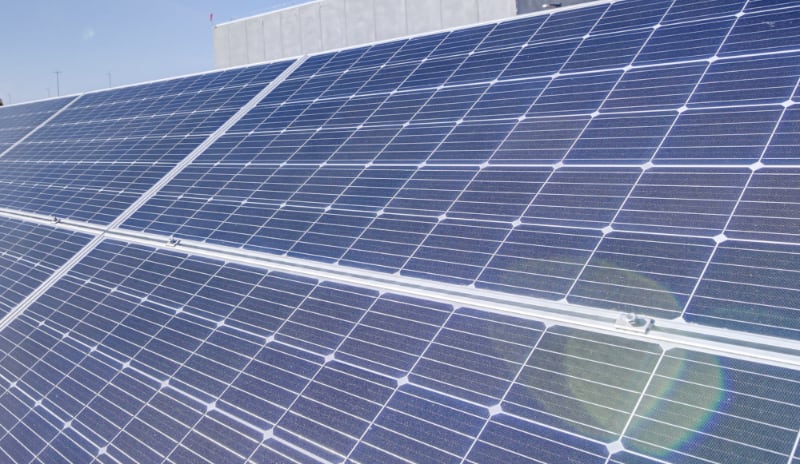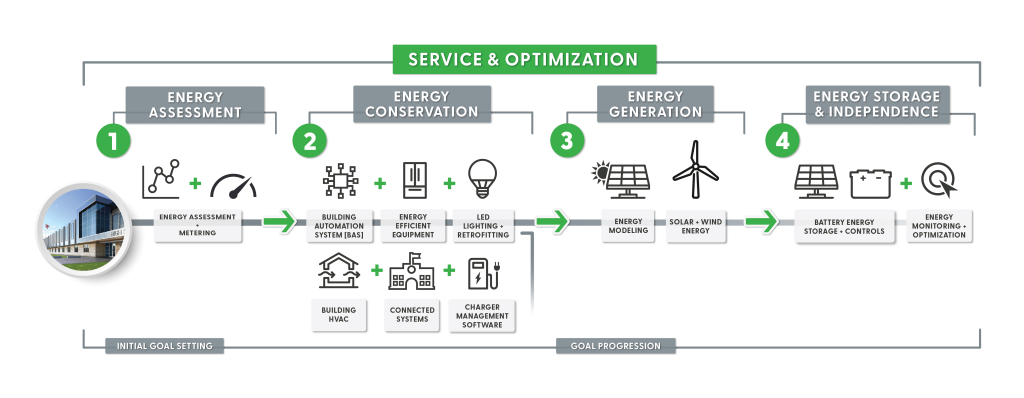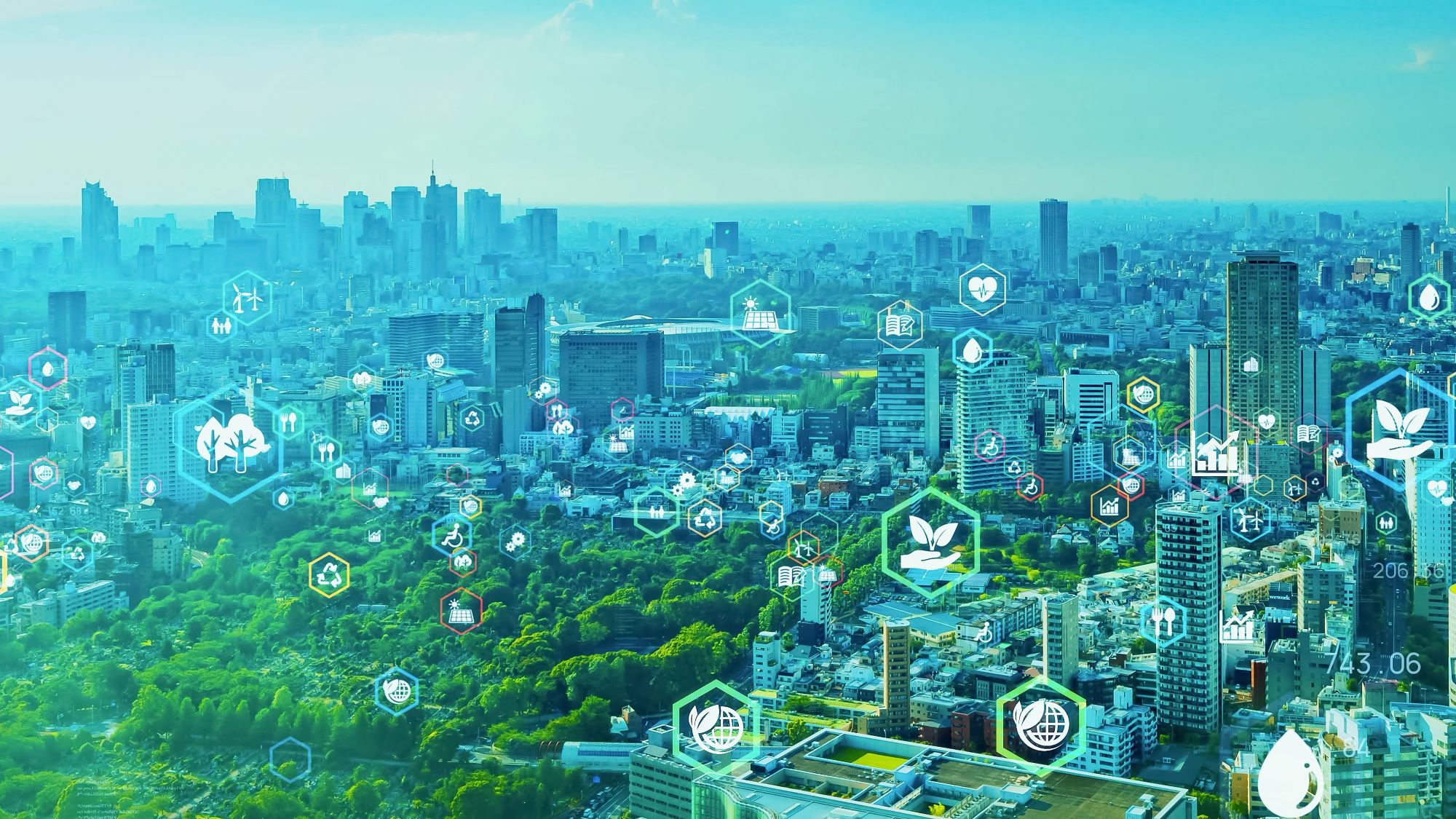
Developing a comprehensive energy program within your organization can seem challenging, but it doesn’t have to be. We’ve developed a Path to Smarter Energy™ to help our customers understand where they are at in the process and guide them on how to best reach their energy and sustainability goals.
As we begin the new year, many of our clients are looking at the following types of goals in their organization:
- Scope 1 and 2 greenhouse gas emission (GHG) reductions as part of a larger, multi-year goal.
- Energy conservation and plans for renewable energy resources (like solar).
- Electric vehicle (EV) charger installation to support vehicle fleets or for employee or guest vehicles.
- ISO 50001 energy management certification.
An important first step in supporting these goals is to undergo an Energy Usage Assessment. Understanding how energy is consumed is critical in making data-driven energy decisions. This assessment can take a few forms. For smaller facilities where energy conservation might be the only goal, it may suffice to review utility bills or data with a consultant and explore steps that could be taken to conserve energy. After implementation, when the subsequent utility bills come, you can track progress. The same data could be used to scope a small solar installation if the client wanted to offset a portion of their electrical usage.

For facilities that want to support any of the other goals mentioned above, some form of continuous energy metering and monitoring, as well as a system that collects and displays the information, become important. An energy management system (EMS) makes these goals possible by:
- Driving conservation and lower GHG emissions by helping the end user see equipment that is on when it shouldn’t be or determine where they can optimize lighting, HVAC or other scheduled systems.
- Providing detailed electrical usage information at various points in the system so that renewable energy can be right sized, applied at the right spot and have a predictable impact.
- Providing peak usage information for engineers to see where spare electrical throughput can support EV charging and how much can be installed.
- Giving clients consistent year-over-year profiles of their energy usage to support energy management certification or information for sustainability reporting.
Real-time metering means that customers can see the immediate impact of changes that were made and can continuously improve their operation’s energy usage, as opposed to waiting for the next utility bill. In addition, an EMS can give end-user maintenance teams information about why energy trips, faults or power quality anomalies (like voltage sags or harmonic noise) occur. This ends up eliminating recurring outages and helps the organization protect its facility equipment.
If you’re interested in what step one of our Path to Smarter Energy might look like for your facility or organization, we’re happy to discuss what a cost-effective solution might look like for you. Taking small steps on your sustainability journey can have a big impact – contact us to learn more.







